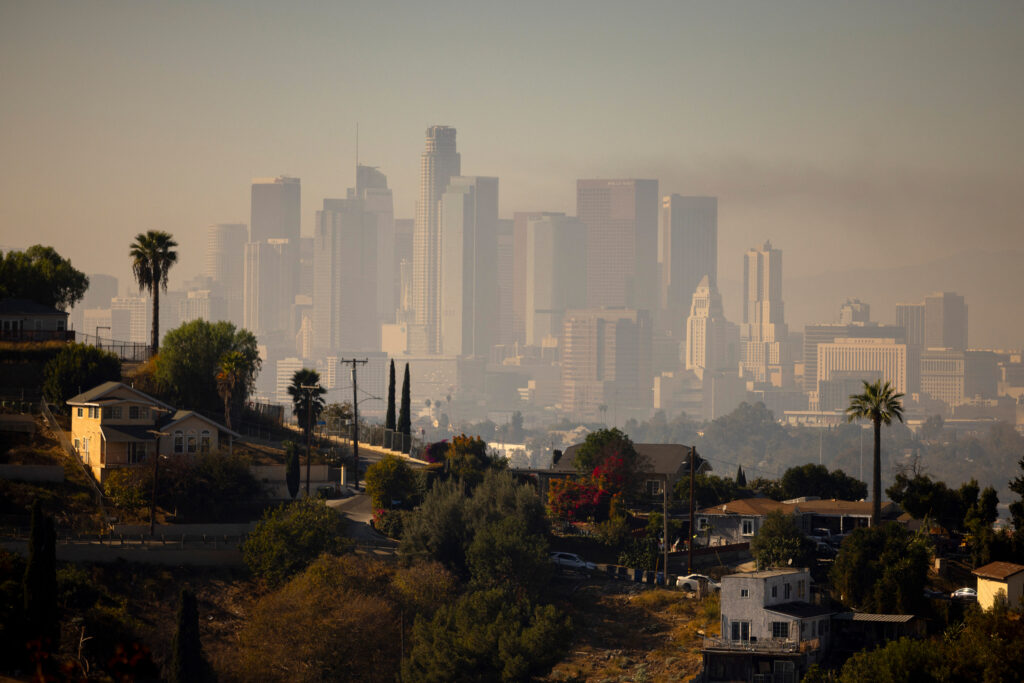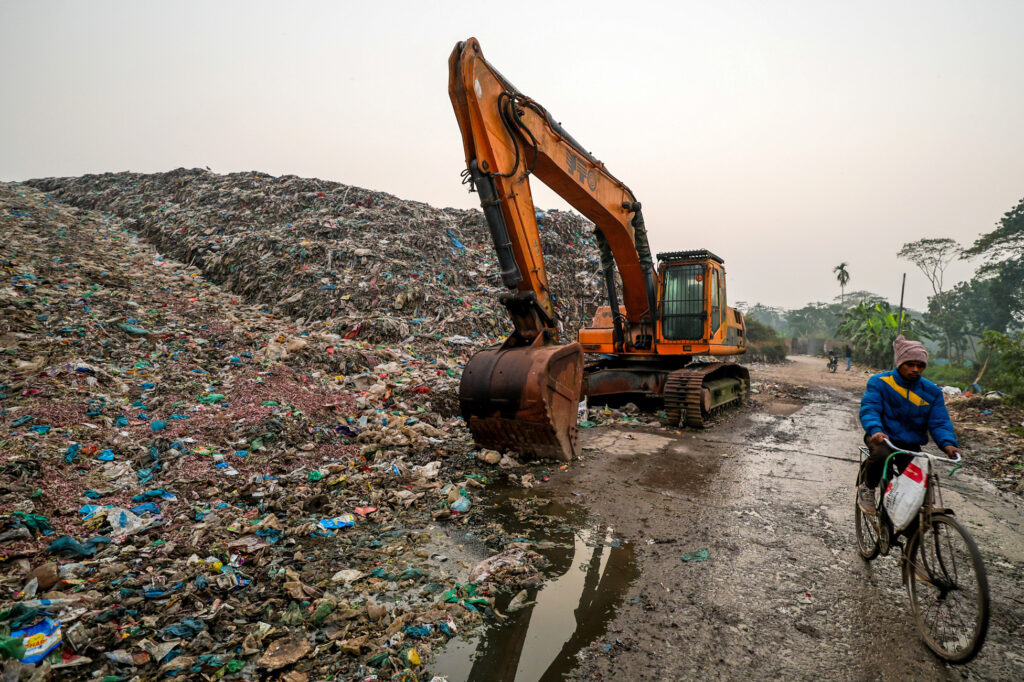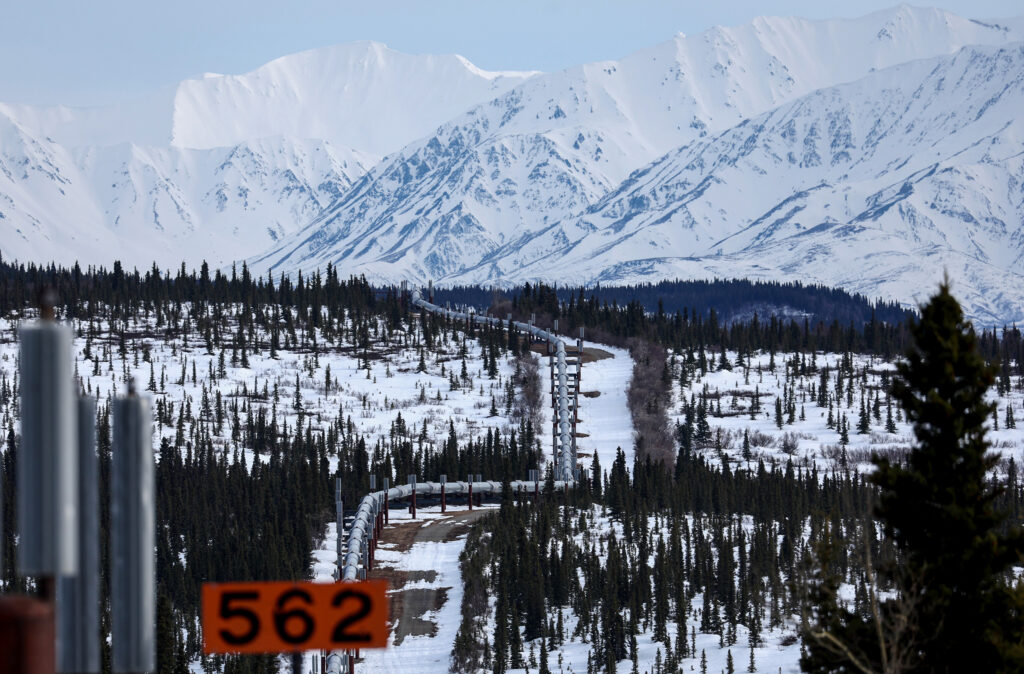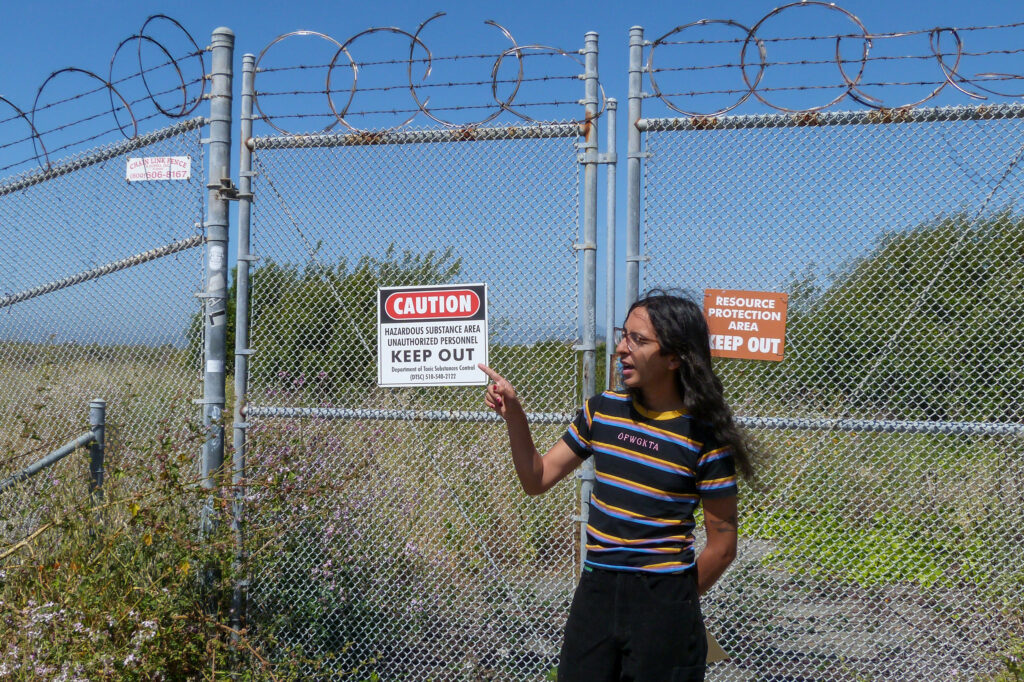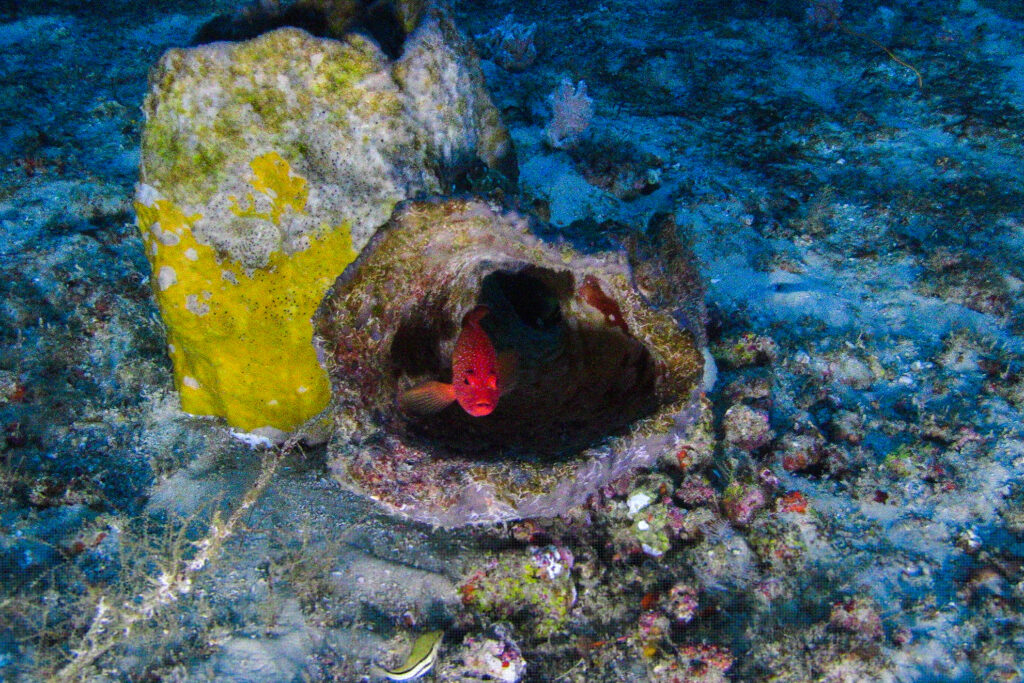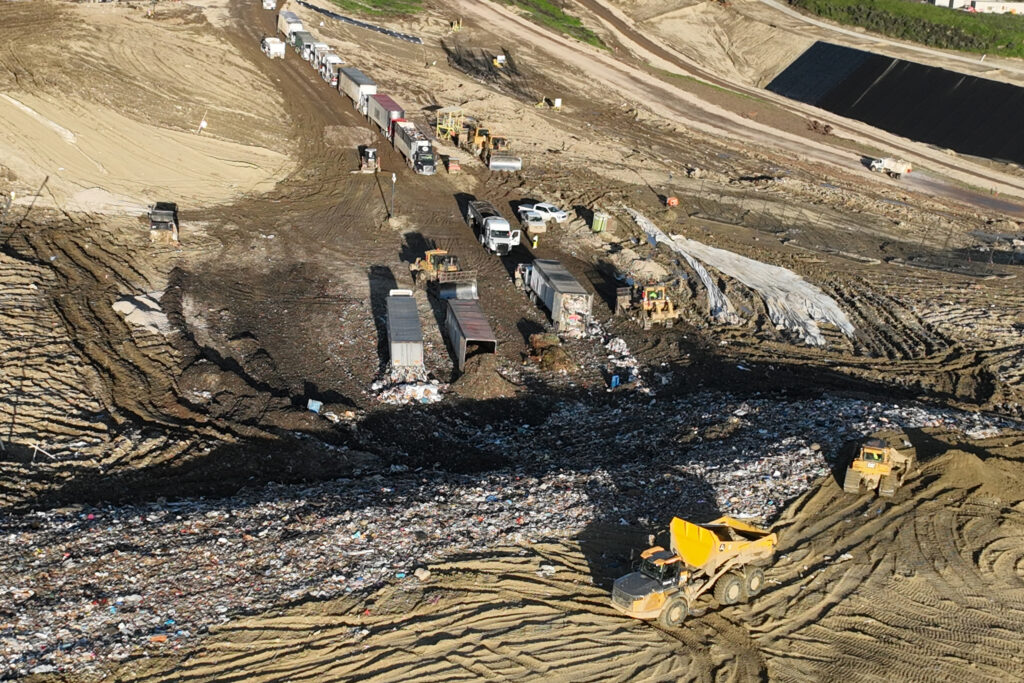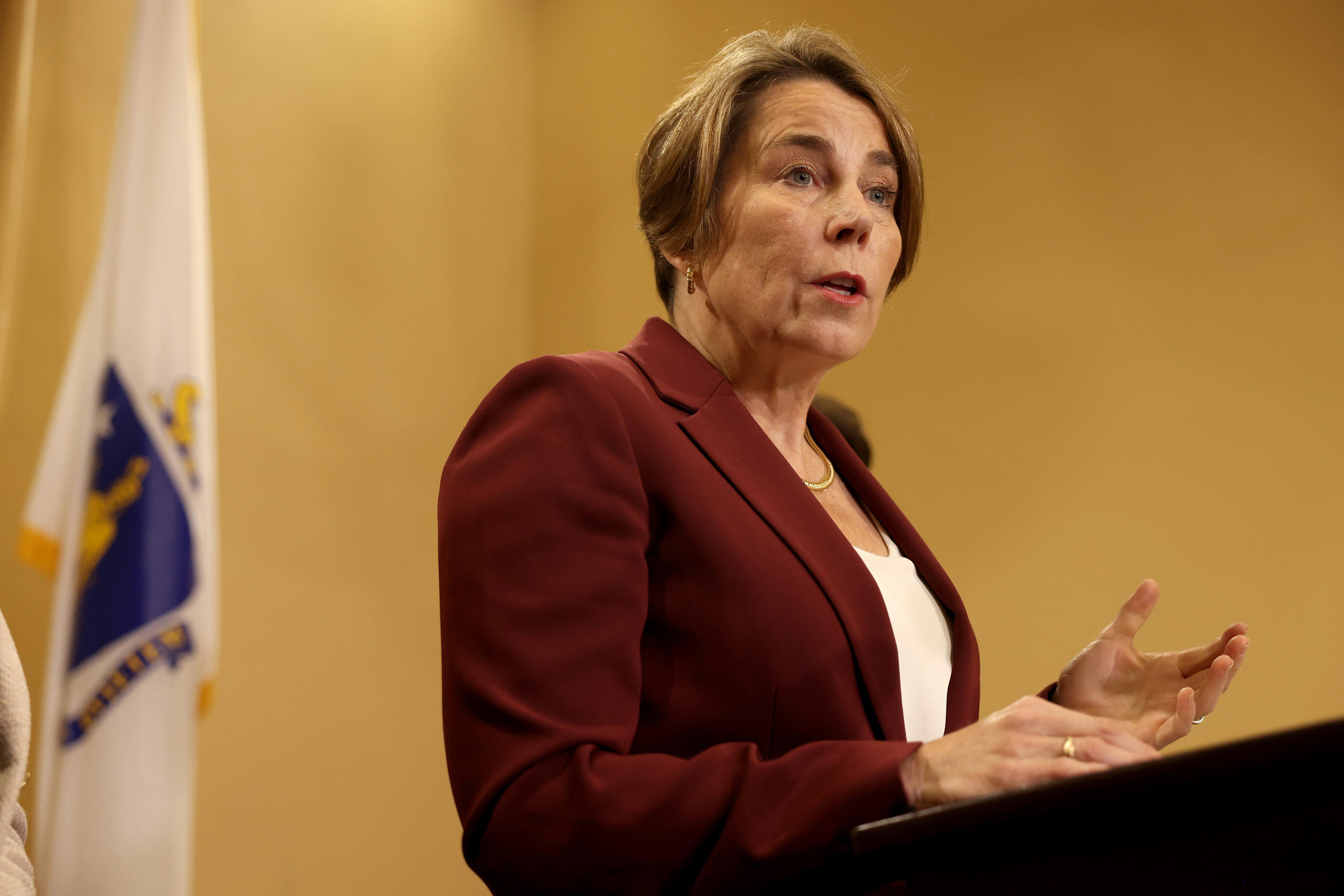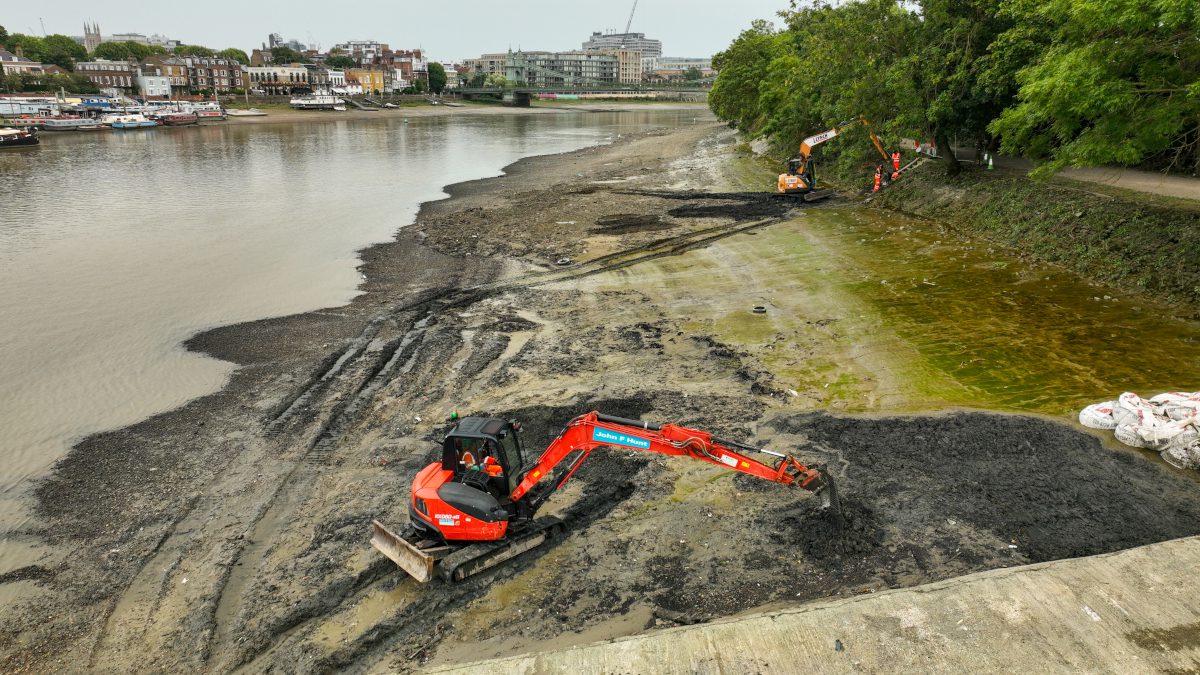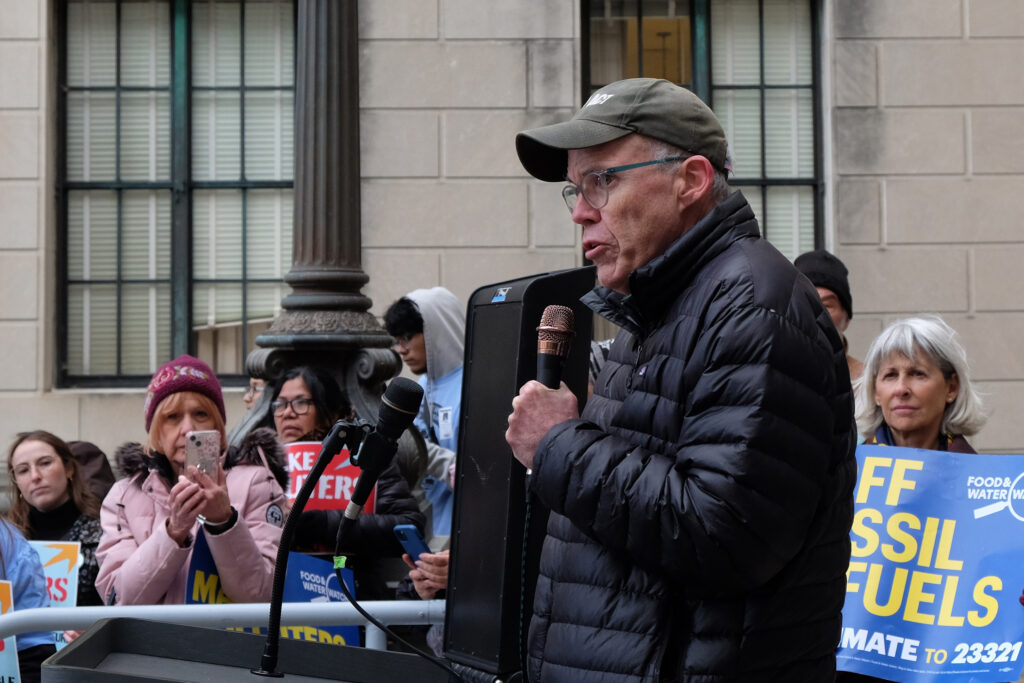While Governor Gavin Newsom was touting California’s climate leadership last week in Brazil at the U.N.’s annual climate summit, a conflict was brewing back home between environmental justice leaders and the state’s lead air pollution regulator.
The fallout came this Tuesday, when a top advisor to the California Air Resources Board resigned in protest over what she described as “growing hostility” towards the Environmental Justice Advisory Committee, or the EJAC, which provides input to the agency.
Catherine Garoupa, executive director of the Central Valley Air Quality Coalition and one of the two EJAC co-chairs, wrote in her resignation letter that CARB has increasingly dismissed science and shown a bias toward regulated industries “at the expense of low income communities and communities of color.”
The final straw was a tense meeting last month where CARB’s Deputy Executive Officer Rajinder Sahota likened a University of California, Berkeley, researcher’s critiques of the state’s forest carbon offset program to President Donald Trump’s attacks on the endangerment finding that allows the U.S. Environmental Protection Agency to regulate greenhouse gases.
“That was really the catalyst, but it’s been coming for a very long time,” said Garoupa, who described Sahota’s comments as a personal attack on the scientist in a letter to CARB leadership following the meeting.
CARB said they brought in the Attorney General’s Office to conduct an independent review and concluded that the agency’s standards of conduct had not been violated. They said they would continue to support the EJAC, whose members will all reach the end of their terms in March.

“We respect Dr. Garoupa’s decision to step down in advance of her term ending this year and commend her for her service,” said spokesperson Lindsay Buckley in a statement. “CARB has made great strides embedding environmental justice into our policies and programs, and we remain steadfast in our support for the committee’s vital work.”
Martha Argüello, the other EJAC co-chair, said she would remain in place to help ease the transition for new committee members joining next year and to work with CARB’s new board chair, who started in October, but she echoed Garoupa’s concerns.
“California’s climate leadership should be expressed in partnership with environmental justice communities and in a willingness to be bold,’ said Argüello, who is also executive director of Physicians for Social Responsibility Los Angeles. “That’s not what’s happening right now.”
Garoupa’s resignation points to the long-running disagreement between in-state environmental justice groups and regulators over the fundamental impacts of carbon markets. That argument appears to be growing increasingly intractable just as the agency prepares to update and strengthen its cap-and-trade program, recently renamed cap-and-invest.
The program puts a declining cap on state carbon emissions across sectors and allows companies to buy and trade permits to emit up to the limit. Proceeds from the permit auctions, which have raised about $4 billion annually in recent years, fund climate programs from high-speed rail to wildfire prevention to affordable housing near public transit.
The revenues have made the program increasingly popular among politicians and funding recipients, but groups on both sides of efforts to confront climate change have been skeptical of it.
The oil industry fights efforts to make the program more stringent and costly, but ultimately prefers it to direct regulation. Trump called out the program this year in an executive order that aimed to block state climate policies, but his second administration has yet to make moves to stop it. And environmental justice groups continue to view carbon trading as a way for companies to pay their way out of reducing carbon emissions, and the associated air pollution, at the source.
Studies have shown that cap-and-trade has driven improvements in air quality across the state, but that the benefits are inconsistent across neighborhoods.
“We’ve always said it’s a dangerous approach to climate policies, to leave it to the whims of the market,” said Argüello. “We’ve always said we should focus more on reducing air pollution.”
In recent years, Garoupa said, the EJAC has worked with CARB to encourage more direct pollution reduction under the program in the state’s most polluted neighborhoods. But members feel their proposals to further limit the role of offsets, exclude technology that captures carbon dioxide directly from the air and implement facility-level caps or no-trade zones have fallen on deaf ears.
Forest carbon offsets were front and center in the October exchange that ultimately led to Garoupa’s departure.
Separate from the permits that regulated companies buy and trade to meet the state’s emissions cap, cap-and-invest also allows companies to buy state-sanctioned offset credits from sectors not regulated by the program, such as agriculture and forestry. Businesses currently can use these offsets to meet up to 4 percent of their required emission reductions, a cap that will rise to 6 percent starting in 2026.
Over 70 percent of those offsets come from projects that aim to store more carbon by changing how forests are managed.
On October 16, the EJAC had invited UC Berkeley researcher Barbara Haya to present some of the science on the offset piece of the program. Haya and other researchers have found that CARB is significantly over-crediting carbon reductions from forest projects, mainly by allowing project developers to choose exaggerated baseline emissions. Developers are allowed to base their estimates of how much carbon a project would store on assumptions that, without the offset projects, there would be very large carbon losses from project areas due to timber harvesting. However, researchers have found that these risks are often not as high as stated.
“This program has been heavily studied because it’s so important,” said Haya in an interview. “I don’t know of any studies that find that the program is not over-crediting.”
Towards the end of Haya’s presentation, Rajinder Sahota, who oversees CARB’s climate policy, provided comments to clear up what she described as a “mischaracterization” of the offset program.
“It’s important to have facts on our side as we do this work,” said Sahota. “We’re seeing the federal attacks on climate science and rollbacks on public and environmental protections, and CARB, the state of California, is spending significant resources to defend against those attacks on our programs and policies,” she said, noting CARB’s defense of the EPA’s determination that greenhouse gases harm public health—the Endangerment Finding that Trump is trying to repeal.
“To date, we have been reluctant to use that same critical lens publicly on the continuing attacks against our climate programs from non-federal parties and that needs to change,” she said.
Offsets aren’t counted in the state’s own inventory of climate progress, she said. She went on to cite letters from the agency and a scientist in 2019 rebutting one of Haya’s past analyses, and characterized Haya as someone with a bias against CARB, saying that she provided unpaid support to a lawsuit environmental groups filed against the program in 2012. (The news outlet ProPublica reported in 2021 that she spoke with the plaintiff’s attorneys but was not a part of the case).
After the October meeting, a group of carbon market researchers wrote a letter of support for Haya, backing her presentation and expressing concerns about Sahota’s dismissal of the peer-reviewed literature as an “attack against [the Board’s] climate programs.” Garoupa also said that CARB’s carbon market staff have turned down numerous requests to speak at EJAC meetings, but did not provide advance notice of Sahota’s plans to attend and make comments, leaving them feeling blindsided by the deputy executive officer’s criticisms.
“It shows that they don’t respect our processes and aren’t actually engaging with us in an authentic way,” said Garoupa.
CARB said that they’re currently developing a plan to bring researchers together ahead of an upcoming review of the offset program. When it reauthorized cap-and-invest this past session, the California legislature directed CARB to produce a study by the end of next year looking at the impacts of state offset projects and potential changes. They also have to update their protocols for assessing and crediting offsets by 2029 to align them with the best available science.
“It is clear the offsets program is an area of robust academic debate and we are committed to a process that considers all perspectives,” said Buckley, the CARB spokesperson, in a statement. “This is an important issue globally and it’s essential to have open and transparent dialogue about how to translate academic findings into actionable, cost-effective policy.”
Katelyn Roedner Sutter, the California director at the Environmental Defense Fund who also sits on the state’s Independent Emissions Market Advisory Committee, said that “offsets play an important and appropriately limited role within the cap-and-invest program,” spreading climate finance into sectors not covered by the cap like forestry and to tribes like the Yurok who have used the money to buy back their ancestral lands. Offsets have historically been a way to make cap-and-trade compliance more affordable for companies, although she said that’s changing since a 2021 rule change requires more offsets to be located in the state, where projects are costlier.
This story is funded by readers like you.
Our nonprofit newsroom provides award-winning climate coverage free of charge and advertising. We rely on donations from readers like you to keep going. Please donate now to support our work.
Donate Now
“I think a part of the challenge here is that the forestry protocol is a decade old,” said Roedner Sutter, of the debate over offsets’ effectiveness for addressing climate change. “We have been among the many asking CARB for years to update their offset protocols, especially their forestry protocol and I am excited that SB 840 is going to make that happen and then make sure they’re updated on a regular basis.”
Haya said Sahota’s comments made her worried about the upcoming reviews. “Instead of addressing the scientific findings about the poor outcomes of their program, she attacked the scientist,” said Haya. “It makes me really concerned that CARB is not going to take the science seriously in revising their protocols.”
The dust-up comes a year after CARB approved updates to the low-carbon fuel standard, its emissions trading program for transportation fuels. The new rules were widely opposed by environmental justice groups, who see the program as driving too much funding to biofuels and hydrogen at the expense of transportation electrification. On cap-and-trade, environmental groups lobbied the legislature to remove the free allowances the program gives to the oil and gas sector when they reauthorized the program this year, and lawmakers ultimately gave CARB the authority to decide whether to do that.
Argüello said that the EJAC and CARB have a better working relationship on topics such as building decarbonization. Facing pressure from environmental justice groups, the state has also taken steps to better incorporate EJ perspectives in CARB’s processes, from establishing two environmental justice board seats in 2016 to, in 2021, changing the EJAC from a temporary body supporting the state’s 5-year climate plan updates into a standing committee.
Yet the groups remain at an impasse over carbon markets.
“On the LCFS, on cap-and-trade, we’ve had a harder time being heard and listened to,” said Argüello. “We’ve consistently had a position that has been resisted by CARB.”
In September, the agency told EJAC that October would be the group’s last formal public meeting before the new EJAC members took over next year. CARB said they plan to issue the solicitation for new members “early next year.” They told the EJAC co-chairs that new appointments would be in place by the fall of 2026, according to Garoupa’s resignation letter.
That would leave CARB without a formal environmental justice advisory panel meeting during the cap-and-trade rulemaking, which the agency wants to finalize by the spring.
Argüello said she was holding out hope for a smoother transition. She and Garoupa wrote to CARB’s new chair, Lauren Sanchez, last month, asking that the new appointments be finalized by March and the current members be allowed to keep meeting as a full committee until then.
“I’m an eternal optimist,” said Argüello. “I want to hold hope that the new board chair will continue the commitments to the environmental justice community and to the EJAC to make it a place where we can support and even push CARB, when it needs it, into that leadership position.”
About This Story
Perhaps you noticed: This story, like all the news we publish, is free to read. That’s because Inside Climate News is a 501c3 nonprofit organization. We do not charge a subscription fee, lock our news behind a paywall, or clutter our website with ads. We make our news on climate and the environment freely available to you and anyone who wants it.
That’s not all. We also share our news for free with scores of other media organizations around the country. Many of them can’t afford to do environmental journalism of their own. We’ve built bureaus from coast to coast to report local stories, collaborate with local newsrooms and co-publish articles so that this vital work is shared as widely as possible.
Two of us launched ICN in 2007. Six years later we earned a Pulitzer Prize for National Reporting, and now we run the oldest and largest dedicated climate newsroom in the nation. We tell the story in all its complexity. We hold polluters accountable. We expose environmental injustice. We debunk misinformation. We scrutinize solutions and inspire action.
Donations from readers like you fund every aspect of what we do. If you don’t already, will you support our ongoing work, our reporting on the biggest crisis facing our planet, and help us reach even more readers in more places?
Please take a moment to make a tax-deductible donation. Every one of them makes a difference.
Thank you,



